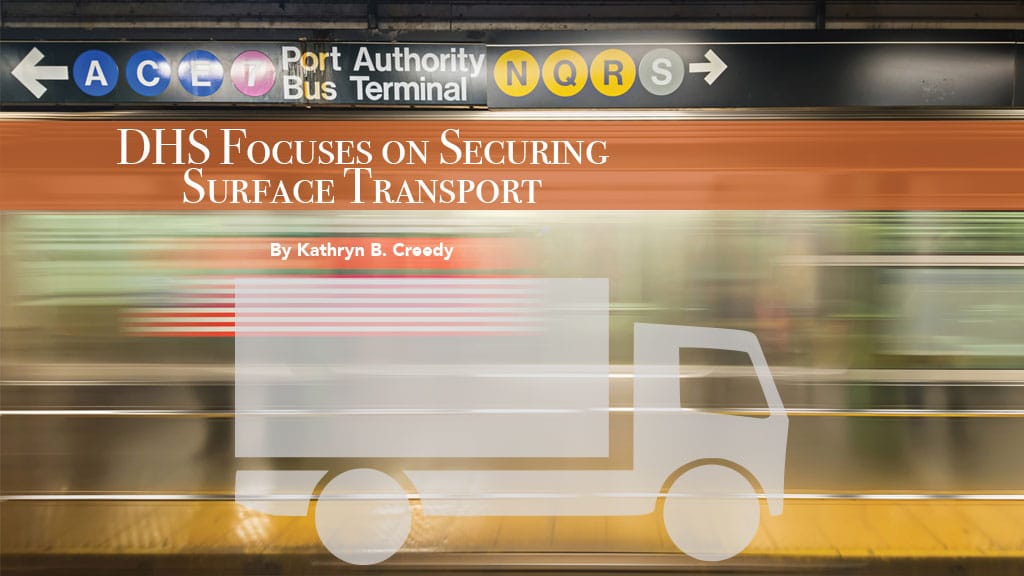The Federal Aviation Administration instituted the first universal screening of airline passengers in 1973 in the wake of a series of skyjackings. But in the intervening 47 years, despite a rising number of attacks, securing surface transportation seems little more than an afterthought.
Until now. The Department of Homeland Security (DHS) is testing a layered security approach aimed at securing surface transport although it won’t talk about test results or if and when its technologies will be deployed.
Periodically, especially after surface transport attacks around the world, reporters have asked why airport-like security efforts can’t be imposed on surface transportation – buses, rail and cars.
After all, it is 17 years since coordinated bombings against the Cercanias commuter rail system killed 193, wounding about 2,000 in Madrid and the 14 years since the 2007 attack in Mumbai that killed 203. But it is not just transit sites at risk. As seen with the Boston Marathon, IEDs have been used on the street which is also included in surface transportation.
Rising Attacks
A recent report by Mineta Transportation Institute’s National Transportation Safety and Security Center said terrorists continue to see surface transportation as soft targets where they can and do cause high casualties. 2014 was a tipping point when there was an acute rise, coinciding with a similar increase in vehicle ramming attacks as outlined in a previous TSI story in the inaugural issue: https://www.tsi-mag.com/vehicle-ramming-attacks-global-domestic-terrorists-learn-from-hamas-by-kathryn-b-creedy/.
The institute, with more than 40 years of data on more than 4,000 attacks, found many attacks target infrastructure, including pipelines while anti-nuclear and environmental extremists in Europe opposing high-speed rail systems committed a spate of attacks on surface transportation.
“Data also reveals that, over the long run, terrorist attacks on surface transportation targets are becoming more successful,” the report revealed. “That is, the most effective terrorist bombers are delivering more bombs to their targets while delivering more lethal results. That lethality is increasing in attacks carried out both by jihadist and non-jihadist groups, although attacks by jihadist groups are generally more lethal. A higher percentage of attacks are directed against buses and are usually the most lethal. A lower percentage of attacks are directed against trains, including subways.”
Most attacks, according to the report, were confined to conflict zones in Africa, the Middle East and South Asia committed by jihadist networks, but jihadists recruited about 20,000 foreign fighters, including more than 3,000 from Europe, North America and Australia.
“One recent development is the growing number of attacks by ‘lone loons’ – highly suggestible individuals with criminal backgrounds or mental problems, possibly inspired by jihadist calls for attacks or by the media coverage of attacks elsewhere,” said the report.
Josh Lipowsky, senior research analyst, Counter Extremism Project, noted IEDs used in the US are not necessarily targeting surface transportation and include Molotov Cocktails.
“Transportation authorities must be vigilant about the potential for IEDs,” Lipowsky told Transportation Security International. “Over the last several years we have seen IEDs hidden inside dumpsters and pressure cookers in backpacks. Mass transit vehicles such as buses and trains can be harder to monitor because of the number of people constantly coming on and off, but they should be thoroughly inspected before beginning service for the day and again at the end of the day’s service. It is incumbent on everybody – the general public as well as transportation authorities – to remain vigilant and point out anything that appears suspicious. It is far better to inconvenience people a few minutes for a false emergency than to have a real one. In some other countries you see guards at parking garages checking under vehicles for sticky bombs. Such checks may be viewed as an inconvenience and added expense in the United States, but it takes only one major incident to shift the paradigm.”
Setracon President Jeffrey A. Slotnick, CPP, PSP noted U. S. bombers do not hold the same values for life and ideology as foreign suicide bombers and thus attacks are designed for survival.
“What we’ve seen in the U.S. is pipe bombs, back-pack bombs,” he told TSI. “The Unibomber mailed his devices and even the Boston Marathon was a backpack left behind as was the Atlanta bombing. The Spokane bombing in 2011 was white supremacists wanting a distraction during an MLK event so they could rob banks.”
Slotnick also questioned what increased security will do to ticket pricing. In aviation, there is government-imposed security fees on each leg of a trip increasing the cost of trips, but it was more security hassles, imposed post 9/11, than costs that caused the near destruction of services under 500 miles because, given security, delays and other factors, it was often faster to drive.
As for how other countries handle such issues, some – such as the Middle East – have zero tolerance often making offenses freer societies take for granted a capital offense. In Italy paramilitary police patrol transit centers.
“We need a change in culture, not new devices and technology,” Slotnick suggested. “Look at Israel’s amazing behavioral profiling, not racial profiling which is different. They ask questions and listen carefully to the response to detect deception in speech. We have to get more adept at that. Human behavioral analysis is the most efficient means of determining ill intent.”
Slotnick said the most efficient security against bombs are dogs with handlers which now patrol bus, rail and airport terminals. “Dogs smell at the molecular level and are between 10,000 to 100,000 times more sensitive than humans,” he explained. “They walk up and down aisles on trains sniffing for explosive materials. We already use sniffer technology in airport screening devices. Sniffer tech can be mounted on walls tied into security system to sense and sample the air on a regular basis.”
Surface Vs Air Transport Security
An explanation on why airport-like security measures have not been imposed on surface transport comes as the DHS’s Transportation Security Administration (TSA) rolls out a new surface security initiative – Surface Transportation Explosives Threat Detection (STETD) Program.
“With an average passenger throughput of 100 – 200 people per minute and the inherent openness of the surface transportation environment, traditional checkpoints (like those at the airport) are not an effective way to screen the millions of commuters entering those systems daily,” said the agency on its website describing the new program. “Maintaining security on the nation’s surface transportation systems takes significant resources and manpower, both of which tend to be in short supply. It’s impossible for law enforcement officials to be everywhere at all times.”
While DHS may be right about the manpower needed to secure ground transportation the number of entry points to a train or bus station should not matter since airports, too, have numerous entry points – parking areas, tunnels, numerous terminals and doors, airside, groundside and drop-off locations – all before passengers are funneled through a security system.
Slotnick, a member of ASIS, the world’s largest membership organization for security management professionals, noted major bombings occurred on the ground side at airports – the El Al counter at LAX in 2002, the international arrivals hall at Domodedovo in Moscow in 2011, in the check in area at LaGuardia in 1975 and in the baggage area at Fort Lauderdale where a gunman killed five in 2017. A 2016 ISIL attack in Brussels targeted both the airport and the train station killing 32 civilians. That same year, ISIL armed gunman uses assault weapons and bombs to kill 45 civilians at Atatürk airport.
“Even airports are not treated as protected areas,” he said. “The first security is well inside terminals. They were built in the 1960/70s and designed for rapid movement from curb to gate. Until we get to a point where we design facilities for security, it will always be an inconvenience. We should treat the entire airport as a security facility screening as people enter the airport, diverting them to special areas where vehicles can be inspected and travel papers but that is a trade-off between efficiency and security.”
TSA also cited the volume of passengers and diversity of facilities for mass transit and passenger rail environments as making checkpoint-style screening unfeasible.
“Subway ridership in New York City is approximately six million passengers per weekday,” a TSA spokesperson told TSI. “The Chicago Transit Authority (CTA) ridership, not counting regional passenger rail totals about two million riders each weekday. On average, a total of 2.5-3 million passengers were screened daily at TSA security checkpoints nationwide.”
But Lipowsky makes a different argument. “More small towns are connected to bus terminals than to airports,” he explained. “Before covid, the Port Authority Bus Terminal in New York served about 225,000 people on an average weekday and more than 65 million people a year. In 2019, JFK airport served just under 59 million people. Port Authority was also the target of an unsuccessful terrorist attack in 2017 when Akayed Ullah attempted to detonate a pipe bomb in an adjoining subway tunnel. Yet the security situation at the bus terminal and subway tunnels do not compare at all to the extended process at JFK. Part of this is because of the sheer volume of people using the bus and subway systems on a daily basis and the congestion added security procedures would cause. There has to be a middle ground to add another layer of security beyond ‘see something, say something.’ Going to a bus or train station is much less involved than an airport, but also much more vulnerable. We should take steps to secure our ground transportation terminals before we are faced with a mass attack, not after.”
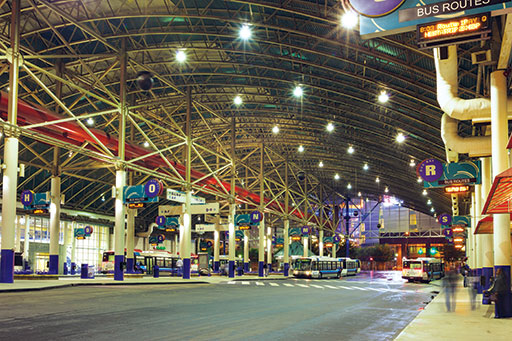
Slotnick agrees. “It is difficult to secure multiple transit centers because they are open systems incorporating many intermediate stops,” he said. “You could probably secure a train or bus station, but how do you do it at bus and subway stops? Americans like freedom and it becomes a trade-off. If it becomes too restrictive to use public transit, people drive at a time when we are trying to encourage public transit. Americans, if they know they are being surreptitiously scanned will create an outcry. In the private sector, employees have pushed back on surveillance monitoring and companies have dismantled it.”
Big Brother
But that’s the question. The American appetite for privacy may have shifted and become more schizophrenic than privacy/security trade-offs blurring the lines between security and personal freedom.
American’s have not-so-blithely accepted airport security along with a host of new surveillance systems to cameras mounted to every traffic light or Britain’s CCTV, all uncomfortable big-brotherish solutions many legal scholars argue exchanges privacy for security.
Consumers are even part of those systems, enthusiastically adopting Ring doorbells, Amazon Echo and smart TVs, with camera and audio devices providing unprecedented access to the most private spaces.
“Unfortunately, the world we live in requires us to be constantly aware so we can quickly react to anything out of the ordinary and hopefully prevent a bigger catastrophe,” Lipowsky concluded.
DHS agrees. “Currently there are very limited solutions to solve this challenging problem,” said DHS on its website. “This is why the Science and Technology Directorate (S&T), is developing an integrated capability to detect potential threat items at the speed of the traveling public. S&T is developing these tools to serve as a force-multiplier, assisting security personnel in keeping the public safe.”
Security at the Speed of Life
The systems developed enable a layered, curb-to-platform detection system “without the need to stop and divest bags at a fixed checkpoint” which, for air travelers, is the holy grail.
But even here, Lipowsky pointed out, non-invasive security technologies, still require a human component.
S&T, along with university and industry researchers, tested several screening technologies enabling “rapid screening of people and carried items from a distance,” said the directorate on its website. “It assures privacy will be maintained by using automated anomaly detection which does not capture an individual’s image.”
One piece of technology, developed in partnership with MIT’s Lincoln Laboratory, the millimeter wave imager screens for potential threat items as people pass by without slowing them down. The technology consists of a set of antennas installed on flat panels that can be mounted on walls, columns, gates, turnstiles and ceilings. The panels send out and receive low-power radio signals that can penetrate clothing and backpacks where it then reflects off certain items. It was deployed in a three-day developmental test and evaluation in 2017 with the Massachusetts Bay Transit Authority emergency training center in Boston which, said the agency, providing a realistic electromagnetic environment. This distance screening enabled screeners to detect various simulated threat items and different distances on the rail platform as people moved in and out of the radar field. The result provided real-time, high-resolution images that don’t slow anyone down.
Another is the Intelligent Video algorithm designed by Johns Hopkins University Applied Physics Laboratory. It enables detection of a leave-behind item while reducing the number of false alerts.
A third, is Forensic Video Exploitation & Analysis (FOVEA). “FOVEA, developed by MIT’s Lincoln Laboratory, is a ‘user-in-the-loop’ tool, said S&T on its website. “The ability to quickly scan hours of video provides better response times to suspected incidents. It is capable of quickly capturing the surrounding circumstances of a leave-behind event, allowing security personnel to clear 30-50% of suspicious packages without necessitating an emergency response.”
Washington Metropolitan Area Transit Authority (WMATA), which averages about 712,000 trips per weekday, was another test site. Other such “unstructured environments,” as S&T characterizes them, are stadiums, convention centers, schools, concert venues and public demonstrations which are ideal targets for expanding the use of this technology.
The tools were also installed in Amtrak’s Emergency Management Agency and WMATA’s Security Operational Control Center and resulted in 500 arrests and the closure of more than 200 cases. It also helped secure the Pope’s visit in 2015.
“The goal,” said S&T Program Manager Don Roberts on the website, “is to make millimeter wave technology as seamless as possible. We want to take advantage of the video information that facilities use on a daily basis and seamlessly dovetail the millimeter wave sensors with the video systems,”
TSA did not respond to TSI questions about whether or not these technologies have been deployed. Nor did it answer questions on whether technology being tested for ground transport will be used to reduce airport hassles in the future. However, Slotnick is doubtful. “Explosives are only one threat,” he said. “There are knives and firearms which need to be screened for, so you’ll still have to x-ray bags and walk through a metal detector.”
Securing Roads
If bus and rail stations are problematic, securing the complex spider web of roadways carrying cars across continents would seem impossible, especially given the unexpected road rage incidents of people shooting in cars.
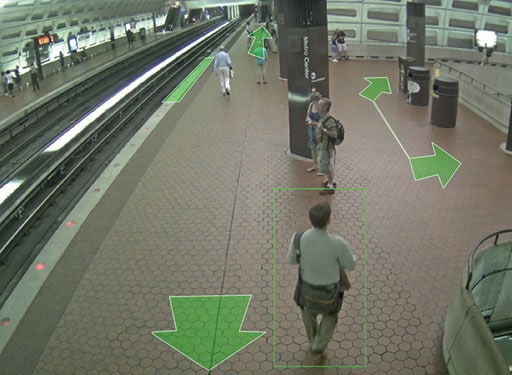
“This comes down to a numbers issue as well,” said Lipowsky. “The United States has 70 interstate highways spanning the contiguous 48 states. Technology can aid in securing the roadways through video surveillance and sensors set to detect explosive compounds. While such technology is in development, the question then becomes one of deployment. We can deploy around high-value targets, but individuals and smaller businesses and houses of worship have to take steps as well to boost their own vigilance, whether that means hiring security guards, volunteers, or investing in Jersey barriers, metal detectors, or security cameras. We don’t want to militarize the country, but there are many soft targets such as houses of worship or bus stations that can take steps to harden their security without overly inconveniencing their clientele.”
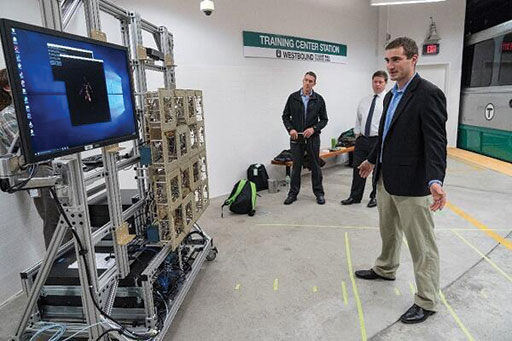
“The primary lesson is to always be vigilant about your surroundings, whether flying, taking the bus, or even driving your own car,” Lipowski advised. “When driving, you always have to consider what the other drivers are doing and watch out for somebody who may cut you off or make an illegal u-turn against the flow of traffic.”
Vigilance
Slotnick pointed to law enforcement and public training as one of the best tactics against terror attacks.
“We get a lot of protection with such training,” he said. “People are trained when they see something, they say something. The process of information gathering, intelligence and target choice is complex making attacks vulnerable to detection. Social media is one of the bread crumbs painting a picture. Some want to take credit. Others want to become famous. It’s another bread crumb.”
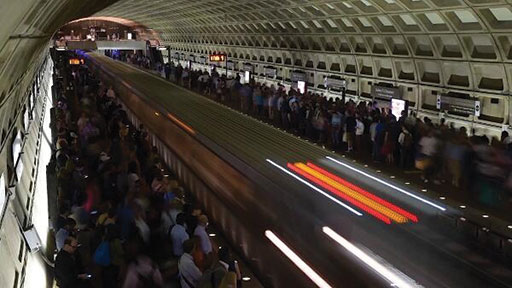
The Mineta Institute study concurs. “We see vigilance works. Between 2005-2015, 14% of all bomb attacks were stopped primarily because intelligence and law enforcement, security officials citizens and transit crew and staff were alert. A number of plots in the United States were foiled by ordinary citizens noticing unusual purchases or other requests that just seemed ‘off’ or ‘out of place.’ These can unravel plots. Of these stopped attacks, passengers, citizens and employees can be credited with detecting at least 25%. Another 24% can be credited to those managing or carrying out security functions – be they military, police, or security or intelligence officials. Everyone also must support reasonable security programs. This underscores not only the importance of ‘see- something-say-something’ programs, but also of the investments in good, sensible security.”
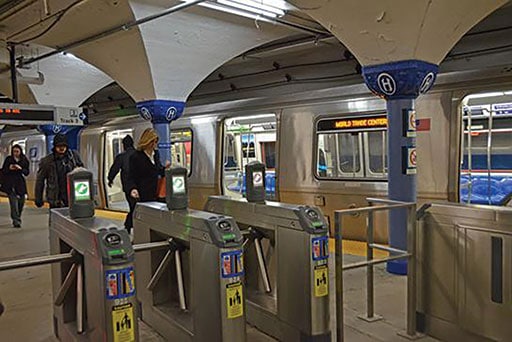
While terrorists are becoming more lethal, employ more tactics designed to create terror such as automatic weapons assaults and executions, the Mineta Institute put attacks in perspective.
“First, everyone must put the risks of terrorist attacks in general, and terrorist attacks on mass transit, into the perspective against all the risks of normal life,” said the report. “Statistically, Americans are significantly more likely to die of accidental or criminal means than at the hands of terrorists. The United States and most countries around the world are not in the same situation as [conflict zones], and they will not become the next Syria anytime soon. Second, the United States has suffered higher levels of terrorist activity than it faces today. In the 1970s, the nation experienced 50-60 terrorist bombings each year. Although much of this was symbolic violence compared with the determination of today’s terrorists to kill in quantity, more people were killed at that time than in the decade following the September 11 attacks. Third, to the extent that terrorism is theatre, it is the obligation of members of free, democratic societies not to overreact, but instead to go about their business. They certainly should not give in to unreasonable fears whipped up by the media or by others with a particular agenda. Whether people ‘soldier on’ or ‘carry on,’ they should never give in to fear.”
